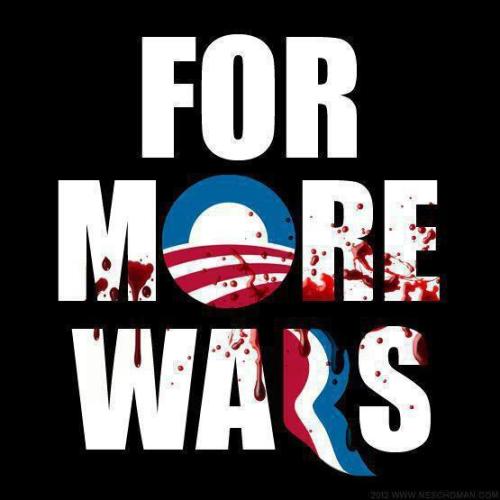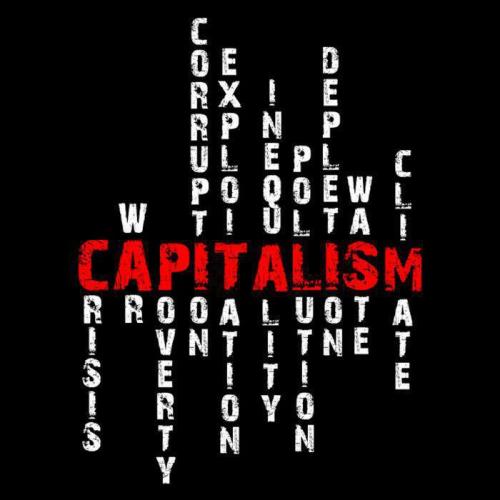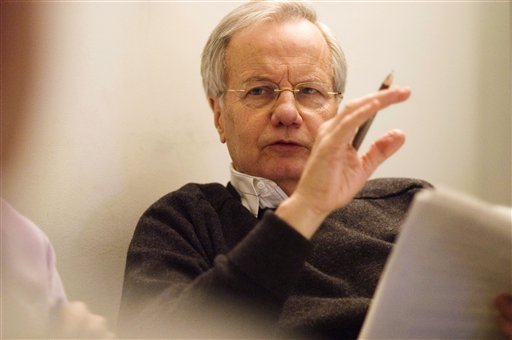In the beginning, harmony: tribes of
human beings live as one, gathering and eating and playing and sleeping
and singing and making love and telling stories together. And,
occasionally, discord: an argument breaks out, strong words are
exchanged, a blow is struck.
When this happens, the tribe meets and arrives at a resolution. Tribes
that cannot do this break up, and the members starve or freeze or are
hunted down by wild beasts, or join another tribe that can resolve
conflicts. Conflicts between tribes are resolved in a similar manner.
For thousands upon thousands of years, this way of life works and endures.
But one day, there is a conflict that cannot be resolved. Discussion,
placation, even combat are not enough; the adversaries still seek
vengeance. Perhaps it is a spiritual aberration, or some technological
or cultural innovation that allows them to continue contending long
after it is healthy, but they do not find their way back to peace as the
others did before. They become machines of war. Their relationship with the environment shifts: the earth must be disciplined, now, to provide them stores of
food to last through their struggle. Their relationships with each
other change: they view all others as potential comrades-in-arms or
enemies, appraising might above all other qualities.
The neighboring tribes do not escape unscathed. Soon they are embroiled
in this conflict, and must contend with an enemy such as they have never
encountered. Many of these communities
perish outright; others, the ones who would survive at any cost, find
that they too must become war machines. They too subjugate the earth and
its animals, enslave their vanquished foes, even their own people,
anything to endure in the face of this terror. They become the terror, they outdo it, and this is their undoing.
Spreading like a cancer, from tribe to tribe, strange changes sweep the face of
the earth. Little tribes merge to become big tribes, and ultimately
nations; temporary military leaders become hereditary monarchs; the
vision of once peace-loving peoples
becomes clouded with carnage. And it is not only in military matters
that these tribes change. Territory is claimed and marked, and becomes
the source of new conflicts. Market
economics is invented: peoples who no longer trust each other insist on
trades where gifts once sufficed—and scramble to outbargain each other,
to cut a profit even in peacetime. Patriarchy appears: the undeclared war between the sexes, the gender roles of warrior and servant, institutionalized and enforced
by each generation on the next. Organized religion is invented: now men
not only vie for land, food, property, revenge, but also for each
other’s minds and hearts.
All of these innovations are catastrophic for human beings. They try to offset
the effects with new innovations, which are greater catastrophes.
Governments, convened to protect peoples, extract taxes from them and
thrive idly off their sweat and toil;
police fill the streets to prevent crime, and perpetrate the worst
crimes with impunity. Defending themselves from the monstrosities of civilization, these peoples breed more awful monsters.
Minor nations, hell-bent on withstanding the assaults of
greater ones, arm themselves to the teeth—and go on fighting and
conquering in exaggerated response to the original threat until they
become great empires. So the Roman Empire finds its origins in the
resistance of rural farmers to Etruscan encroachments; so the rest of Europe becomes a snakepit of competing empires, as a consequence of hundreds of years spent fighting that one. Later historians will look at the bloody wars waged on the edges of every civilization as evidence that the “heart of
darkness” beyond this frontier is a bloody barbarism; but perhaps it is
the peace-loving barbarians who are defending themselves from the
bloodthirsty. Perhaps the true heart of darkness lies at the center of these empires, in the eye of
the hurricane, where violence is so deeply ingrained in human life that
it is no longer visible to the naked eye: slaves go about in the
streets as if of their own volition, powerless even to rebel; gladiators slaughter each other in the circuses, and it is called entertainment.
The next military campaigns are a symptom of social viciousness, no longer a cause. Now the invisible violence of economics ordains the visible violence of armies: soldiers cut paths into the last wilderlands of
barbarism so further resources can be seized by merchants, and the
freshly destitute barbarians constitute a new consumer base. Whole
continents are despoiled, and the inhabitants enslaved—and then their
destitution is cited as proof of their racial inferiority, by the inheritors of their stolen worlds!
Missionaries are in the front lines of the assault, enforcing the reign of the jealous One and Only God as surely as the soldiers enforce the reign of brutality. Terror for territory, blood for money, money for blood, He ordains it all—as it ordains Him.
The successors of the missionaries pray
directly to the market. These new priests are even more successful than
the soldiers in imposing the rule of
power: a day comes when shackles are no longer needed to make slaves
servile, when idolatry alone is enough to keep them submissively
fighting amongst themselves. Now no one can remember any other life, and
son fights brother fights father fights neighbor, as the specters of
fear and avarice look over their empire from above. Kings, generals,
presidents rise and fall, but the system, hierarchy, remains: competition itself holds the crown, picking and discarding its champions without pity.
Everyone in these relationships of violence still wants, desperately, to escape, but again and again they bear the seeds of
this violence with them, destroying every refuge as they enter—as the
refugees who flee to the “New World” do, and the Communists who
overthrow the Czar. Even those who do escape, like the artists whose
communes gentrify neighborhoods, whose provocative innovations set
precedents for the next generation’s fashion photography, only pave the
way for the steamrollers that will follow in their footsteps.
Violence reaches an all-time high. Schoolchildren, mailmen, formerly the very picture of
sociability, begin to gun down their companions in cold blood.
Ministers molest altar boys, fathers batter their daughters, teenagers
rape their dates. Prisons overflow. Millions perish in holocausts across
nations and decades, and the maimed survivors initiate subsequent
holocausts. Nuclear missiles point at everyone, until the imminence of the final holocaust can only be discussed in platitudes. Now we are all on death row, all political prisoners. Even in the loftiest citadels of the United States, protected by the most sophisticated and well-equipped military in the history of
the solar system, white-collar workers with full benefits and life and
health insurance are no longer safe—airplanes crash, skyscrapers fall.
Terror threatens us all.
Tonight a Palestinian youth struggles to work out the equation: have his
enemies filled his world with enough misery that he feels more hatred
for them than he does love for life? He thinks of his crippled father, of his bulldozed house, of
his departed friends—who computed this same equation daily, always
coming to one conclusion, until the day they came to another.
Where, through all this, is love? It is still here, in the forms it has
always taken: families eating together, friends embracing, gifts given
simply for the pleasure of giving. We
still forgive, converse, fall deeply in love; it even happens
occasionally that new tribes federate to confront a common
antagonist—not out of malice, but for the sake of
peace, hoping to conclude conflicts as they were in the days before
warfare and commerce. These moments, even when they occur between only a
few individuals, are as powerful and precious as they ever were. And
they are still infectious, as infectious as violence and hatred, if only
they can find unarmored hearts in which to catch hold.
The world now waits for a war on war, a love armed, a friendship which
can defend itself. Anarchy is a word we use to describe those moments
when force cannot subdue us, and life flourishes as we know it should; anarchism is the science of creating and defending such moments. It is a weapon which aspires to uselessness—the only kind of weapon we will wield, hoping against hope that this time, through some new alchemy, our weapons will not turn upon us.
We know that after “the” revolution, after every revolution, the
struggle between love and hatred, between coercion and cooperation, will
continue; but, then, as now, as always, the important question is—which
side are you on?








